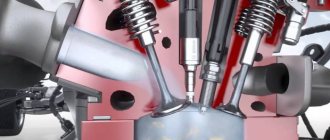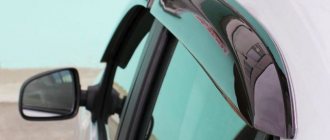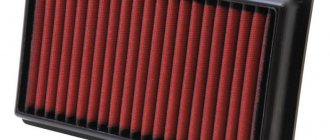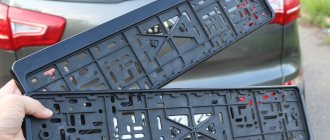In the middle of the last century, at one of the General Motors automobile exhibitions, the first solar-powered car was presented for the first time, the driving force of which was an electric motor powered by a selenium battery powered by the sun. Its length was only about half a meter, and a little more than ten batteries were located on the roof of the vehicle.
The designer of the car was company engineer William Cobb, whose research at that time was heavily funded by the company, promising a big leap in the development of solar-powered cars. However, the research was soon curtailed, and its results were forgotten for almost thirty years.
How it works?
A solar car does not use a conventional internal combustion engine to move, but an electric motor powered by batteries.
The first solar-powered cars were designed in the USA in the middle of the last century. The idea itself was extremely tempting, especially considering the abundance of sunny days in most American states. The problem was the lack of sufficiently powerful batteries, which at that time did not allow the development of the creation of a solar car. New attempts to manufacture solar-powered cars date back to the nineties of the last century, when more efficient batteries appeared. It is necessary to understand what the purpose of developing solar cars was.
The main reason is the fuel crisis, which began due to the increase in the number of cars. Rising fuel prices, environmental pollution and other negative aspects forced engineers to look for alternative types of machine design. Solar cars are a common means of transportation, although they are not yet widely used.
In order to understand what a solar car is, you need to consider its design. First of all, let's consider what energy source is used in solar cars. This is sunlight falling on the roof of a car, on which photovoltaic cells are placed - solar panels. They convert light into electric current, which is stored in batteries and used to power a brushless electric motor. The operation of the system is controlled by a controller that monitors the charging mode of the batteries, switches them if necessary and performs other functions.
Solar car as an invention of the 20th century
The history of the creation of cars powered by solar batteries began in the mid-twentieth century in the USA, however, due to the fact that the technologies of that time did not allow the production of a powerful solar battery of a small size, and the produced batteries were not energy-intensive, the development of this the automotive industry was suspended. Only in the 90s, this topic was returned to and work continued.
An increase in the efficiency of solar panels has made it possible to increase the amount of electricity they generate, and new generation energy-intensive batteries have made it possible to create the necessary energy reserves when moving over long distances.
The use of new materials in the manufacture of the body, new transmission systems and types of electric motors also affected the development of this type of car. Now body elements are made of durable and lightweight plastic, parts with the lowest level of rolling resistance are used in the transmission, and brushless-type devices are used as engines, using poles made of rare-earth magnetic materials in their design.
Another invention that began to be used in solar cars was wheel motors. In this case, an electric motor is located on each of the vehicle's drive wheels, which increases the overall efficiency of the transmission mechanism.
The increase in the power of the solar battery installed on the car was also influenced by the fact that such devices can now be produced flexible, therefore, placed on all elements of the body, which increases the area that absorbs solar energy.
Popular acting models
A solar-powered car is an attractive idea in all respects, which is why almost all well-known manufacturers are developing such designs. Among the most famous models are:
Model Ecletic
This is a development of the French company Venturi, capable of reaching speeds of up to 50 km/h and having a power reserve of 50 km. The power of the power plant is 22 liters. With.
Astrolab
This is also the brainchild of Venturi engineers, with a range of 110 km and a speed of up to 120 km/h with an engine power of 16 kW.
Stella
This is the development of specialists from Holland. Engineers at the Eindhoven University of Technology have created their own version of a family electric car with a range of up to 600 km. The machine has high-capacity batteries.
Solar World GT
Product of the Swiss company Green GT. The power of the power plant is 400 hp. s., maximum speed - up to 275 km/h. The car accelerates to 100 km/h in just 4 seconds.
There are also Russian developments of solar-powered cars, which are being carried out in St. Petersburg. The direction is promising and is actively developing in all developed countries of the world.
Basic concepts of a solar car
A sunmobile usually includes:
- Solar battery;
- An energy storage device that allows you to move at night or in heavily cloudy conditions, when the already low specific power of solar radiation decreases;
- An electric motor, which is often installed directly on the drive wheel(s) to eliminate power loss during transmission. Most often, low-speed DC motors are used, with an efficiency of 98%;
- A control unit that distributes the received energy (the excess is accumulated in the battery) and regulates the operating parameters of the solar battery (cooling, orientation to the sun);
- Chassis.
For the most efficient conversion of sunlight into speed, powering some components and power reserve, you need:
- Good aerodynamics;
- Large area for placing photovoltaic cells;
- Light weight electric vehicle.
The first two points determine the bizarre shape of the body, reminiscent of an insect or an airplane wing. In some concepts, the wheels are covered with fairings. A sunmobile can’t even dream of a solid ground clearance. The roof is usually made as a single unit with the hood and trunk. Some concepts resemble golf carts - two-seater, without windows or doors. And not everyone has a full-fledged roof over their heads (for example, the French Venturi Astrolab).
For the sake of lightness of construction, among others, materials such as carbon fiber and composites with carbon inclusions are used.
The sunmobile is also demanding on tires. It is better suited to those with a low rolling resistance coefficient. Michelin is recognized as their best manufacturer.
Sun car racing
With the advent of solar cars, a new sport arose - brainsports. This is a race in solar-powered cars.
Competitions have already been held in different countries. The races that take place between the Australian cities of Darwin and Adelaide are widely known. The total length of the route is 3000 km. The intention of the organizers of such events is to promote and promote the development of research and production of solar cars in different countries.
Equipment is tested under real load conditions, allowing manufacturers to find and eliminate flaws in the design. It is too early to treat such competitions as serious sporting events, but the process is ongoing and developing.
Advantages
Solar-powered cars can boast a number of advantages over conventional cars:
- Environmentally friendly. The solar mobile does not have a detrimental effect on the ecosystem. The main disadvantage of cars running on traditional fuel is the increased emission of CO₂ into the Earth's atmosphere. This is one of the most harmful greenhouse gases. Its excess in the air leads to irreversible climate change on the planet and the formation of holes in the ozone layer. A car powered by solar panels does not produce harmful emissions.
- Free affordable energy. Energy drawn from the sun is completely free. The solar car is a successful example of using this energy.
- There is no need to create a network of gas stations.
- Long service life. The photocells that solar vehicles are equipped with can function properly for 25–30 years.
Some of the listed advantages can be looked at in two ways. Many of these “advantages” have become the reason for the lack of demand for such cars in the wider market.
Advantages and disadvantages
The advantages of solar-powered cars include:
- environmental safety, no harmful emissions
- the source of energy is endless and inexhaustible
- unlike electric vehicles, which require recharging at a special station
- long service life of vehicles
- no fees for using solar energy
The disadvantages of this type of transport include:
- high prices caused by piece production of cars
- solar panels for a car on the roof are not specially manufactured, which requires adjusting the parameters of the chassis to the capabilities of photocells
- there are no repair stations or service networks for such equipment
- speed and range are significantly inferior to existing models on internal combustion engines
Manufacturers are striving to enhance the positive aspects of solar vehicles, while simultaneously working to eliminate the shortcomings.
Advantages and disadvantages of solar electric vehicles
Electric vehicles powered by solar energy are considered promising developments that may become widely used in the near future.
- An environmentally friendly solar-powered electric car does not cause any harm to the environment. It has no emissions that contribute to the greenhouse effect.
- Solar energy is available and completely free. Unlike oil, it does not require special production and expensive processing.
- There is no need to organize a network of gas stations.
- Significant service life of solar cells, which, subject to proper handling, can last at least 25-30 years.
Since these systems have not yet been fully developed, they have a number of disadvantages, mainly due to the imperfection of their design.
Among the disadvantages we note the following:
- Insignificant efficiency, averaging from 15 to 20%. In this regard, the power of the engines used is also low - within 2-3 horsepower.
- At night, additional energy sources are required for movement, since the batteries do not have sufficient capacity to power the engine for a long time.
- The high cost of photocells and other components makes the entire car very expensive.
- Solar panels require a large area to provide the required power. As a result, the total weight of the car increases and leads to additional losses in its total power.
Thus, a solar-powered car is not a myth, but a reality, and work in this direction is actively underway. Modern technologies are developing so quickly that the creation of a mass-produced car is a matter of the not too distant future.
Solar energy in cars (transport) is an interesting area of research for all automobile concerns. After all, solar energy for vehicle traction systems is inexhaustible.
Although it is not yet possible to obtain enough power from the sun for a car to operate it, many automakers are trying to find the use of solar energy batteries as an alternative source. After all, even one kilowatt of additional energy from the sun for 12 hours can give a car a range of about 60 km and save a whole can of gasoline.
Many methods have now been developed to convert solar energy in cars into electrical energy. In addition, the use of solar energy to power various objects is a popular area of research around the world.
There are many methods and theories for converting solar energy, the most promising for the automotive industry are:
- use of photocells in transport and stationary;
- the use of various heat engines to convert solar energy (Stirling engine, steam engines, various variations of external combustion engines, etc.);
- use of solar power plants (thermal air, various variations of ground-based, etc.);
The large-scale use of solar energy is hampered by the imperfection of solar energy converters and their low efficiency, especially when installed on cars. At a fairly high cost of production and operation.
Currently, the most popular use of photocells is for the accumulation and conversion of solar energy, due to their reliability, ease of maintenance and manufacturability, incl. for cars and other vehicles. As a rule, photocells (“solar panels”) are installed on open surfaces that have a good location for sunlight, for example, inside the roof of a car.
Solar energy is already used as an alternative energy source by cars, for example BMW, Toyota, Fisker. Due to the low power and high cost of converting solar energy, photocells have not yet found mass application, however, the prospect of their use in the automotive industry is quite large.
Published in Energy Sources
In the last decade, such an inexhaustible source of energy as sunlight has increasingly attracted the attention of the world community. The use of solar energy for transport is a promising direction in the development of transport technologies. The solar transport group includes all land, water and air vehicles that use solar energy for movement. Such machines are usually equipped with solar panels, the photocells of which convert visible sunlight, infrared and ultraviolet radiation into
electrical energy, which is subsequently used to power their electric motors.
Despite the fact that the use of solar panels as energy elements for vehicles is quite promising, there are a group of factors that negatively affect the speed of development and implementation of solar technologies in the global infrastructure. While the use of solar panels provides high efficiency for electric vehicles in clear, sunny weather, in the evening and at night, as well as on gloomy days, the use of these photovoltaic cells is completely impractical. Coming out of this, in most modern types of electric transport it is more advisable to use solar panels exclusively as additional batteries for electric motors, along with standard batteries.
Although sunlight is completely free to use, creating solar panel cells is quite expensive. In addition, 90 percent of solar panels are made from silicon, which makes their production environmentally unsafe. This factor is one of the main reasons for slowing down the rapid development of solar transport technologies in the world.
Development prospects
A completely reasonable question often arises: who drives solar cars and when, since they are not visible on the roads. It is necessary to understand that at this stage of development, such models are piece products and are not yet going into industrial production. It is important for engineers to determine the level of capabilities of such equipment and create competitive samples at affordable prices.
A solar-powered electric car is an experimental, largely “raw” design that is under active development. So far, neither solar panels for cars nor electric motors can compete with internal combustion engines in terms of power and speed.
There are different design options, from a common motor to in-wheel motors that provide independent drive for each wheel. High prospects do not allow designers to refuse work, and the results obtained demonstrate success and stimulate further research.
History of development
For the first time such a unit was presented to the public back in the mid-20th century. However, due to its imperfections, it did not last long at the peak of popularity and was forgotten for many years.
Repeated research in this area began only in the 90s, since the efficiency of solar panels was raised to 15%. At first, experiments were carried out by single inventors, and then representatives of large automobile companies also got involved. Thanks to modern developments, it was possible to obtain solar panels with an efficiency of up to 36%. This made it possible to make a real breakthrough in the field of their practical application.
The use of solar panels in the automotive industry has led to the development of new technologies aimed at reducing mechanical losses, reducing vehicle weight, and increasing their overall efficiency. The bodies of such cars are made of lightweight and high-strength composite materials, and the installed tires have the lowest rolling resistance. The latest innovations and achievements of the automotive industry are being tested on new electric cars.
Modern electric vehicles are equipped with lightweight electric motors that operate on direct current. They use a brushless design and use rare earth magnetic metals to make the poles. To eliminate mechanical losses as much as possible, some transmission models are equipped with so-called wheel motors, when each wheel is powered by its own motor.
A major achievement is thin solar panels that can be installed on any surface of the car, thereby increasing the area for receiving solar energy. Similar designs began to be used in ordinary cars as an addition to the main energy supply system.
Solar panel on the roof of a car
Solar panels are not only used for solar powered vehicles. They are also used by ordinary car enthusiasts to recharge batteries, power laptops, mobile devices or camping household appliances. Solar panels for motorhomes are widespread, providing energy to all devices while parked and receiving a charge during daylight hours. They can also work while moving, which expands the possibilities and allows you to use daylight more efficiently.
There are special designs designed for installation on the roof of a car. These are flexible photovoltaic panels that follow the shape of the car's roof and do not impair the aerodynamics of the car. The risk of panels falling off from a strong oncoming flow or a gust of side wind disappears. There are other developments with different characteristics and operational features.
How solar energy is converted
The operation of electric vehicles powered by solar panels is based on the conversion of light flux into electric current. The electricity thus obtained is used as a power source for the engine that drives the car.
The direct conversion of solar energy into electrical energy is carried out due to p-n conductivity that occurs in solar photocells. They are made from silicon arranged in two layers, to which various active substances are added.
The schematic diagram of a solar panel includes the following components and parts:
- During the manufacturing process, the top layer of silicon is coated with phosphorus. This leads to the formation of a n-layer. The surface of the lower layer is covered with boron, forming a p-layer. At the point of contact of both layers, a pn junction appears, which determines the degree of current conductivity in the photocell. A certain number of such photocells are combined into a solar panel.
- Under the influence of light energy, the upper layer of silicon begins to produce additional electrons with a negative charge, and positively charged elements - holes - are formed in the lower layer. These additional particles with opposite charges create an electric field between the layers, which, in turn, leads to the formation of a potential difference. If each layer is connected to electrodes, and a load is connected to them, then electric current will begin to flow in the resulting circuit. Particles with a negative charge will begin to move up, and those with a positive charge will move down.
In this system, you can connect any suitable load, including an electric motor. Normal operation in any mode is ensured by special electronic devices. Batteries with a certain capacity capable of delivering the installed electrical power will be required. A similar design circuit can be connected to various mechanical units, including the drive of an electric vehicle.











